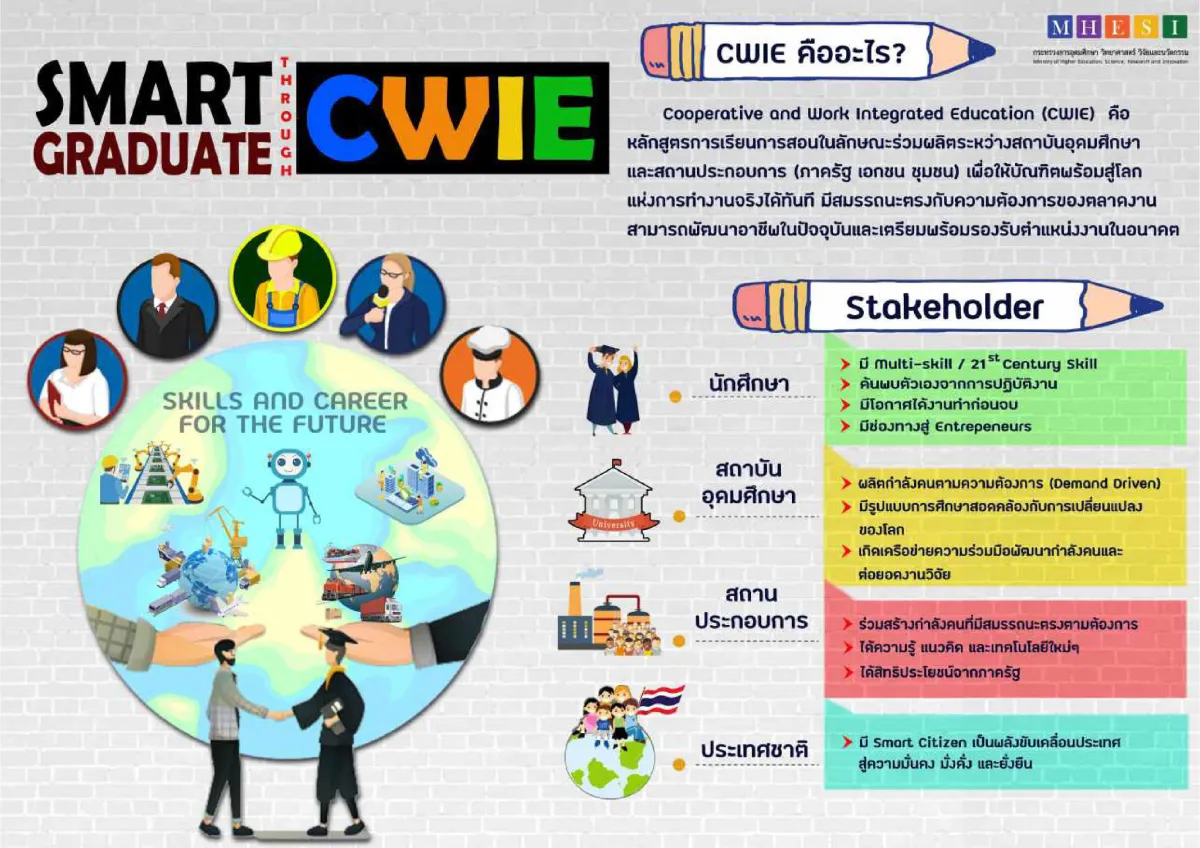Principles and Curriculum Model for Promoting Cooperative and Work-Integrated Education (CWIE)
Promoting cooperative education and integrated education with work under the Cooperative and Work-Integrated Education (CWIE) platform is a plan to enable higher education institutions to produce and develop the country's workforce in 2021-2027, as well as the plan for education reform.
The principles of the CWIE curriculum include the following four key characteristics:
- “University-Workplace Engagement” is a collaboration between higher education institutions with establishments to produce graduates with competencies ready for the career world and consistent with the current and anticipated future job market needs;
- “Co-design Curriculum” is a jointly designed curriculum that emphasizes learners’ competency, which is able to connect the world of education with the career world by balancing academic, professional, and life subjects;
- “Competency-based Education” is teaching and learning management aimed at developing competencies, practicing problem solving, and measuring and evaluating systematic competencies;
- “Experiential-based Learning” requires hands-on experience, coupled with assessment by workplace professionals, and creating learning procedures in the workplace.
CWIE Course Format
- “Separation” is a program of theoretical study at a higher education institution until graduation, then an internship in an establishment for a specified period, such as cooperative education, etc.;
- “Parallel” is a study in a higher education institution and work in the establishment throughout the course;
- “Mix” is a program that combines theoretical study in a part of higher education and theoretical study with work in another part of the establishment, such as work-based learning management, Samui Model case study of the Department of Industry, Tourism, and Hospitality, Walailak University, etc.
The three forms of CWIE must be a collaborative learning arrangement to develop students’ knowledge and skills while they are in higher education institutions and work establishments.
Benefits for Higher Education Institutions, Establishments, and Students from CWIE (“Win – win – win benefits”)
Higher Education Institutions
- It is the goal to produce graduates with quality that meets the job market's needs by linking the application of knowledge to practice. The development of expertise will create innovation and new knowledge. This gives graduates the competencies and characteristics that make them ready to work (i.e., employability);
-
It also turns into a process of teacher development; teachers can use the supervising experience or working with the industry to develop curriculum or develop more effective teaching objectives. In addition, the academic cooperation between higher education institutions and enterprises enables them to jointly develop or further the mission of research and academic services.
Establishments
- They get a competent workforce that meets their needs;
- They gain knowledge, ideas, and new technologies from higher education institutions;
- They reduce the cost of recruiting and training new employees and increase the potential for immediate employment.
Students
- Students develop both complex and soft skills to enhance their competence and prepare for the career world;
- They have an opportunity to get a job before the end of their study program.
Source: Quality Enhancement in Higher Education Management Division, Office of the Permanent Secretary for Higher Education, Science, Research, and Innovation
Tel. +66 2039 5607
For more information
